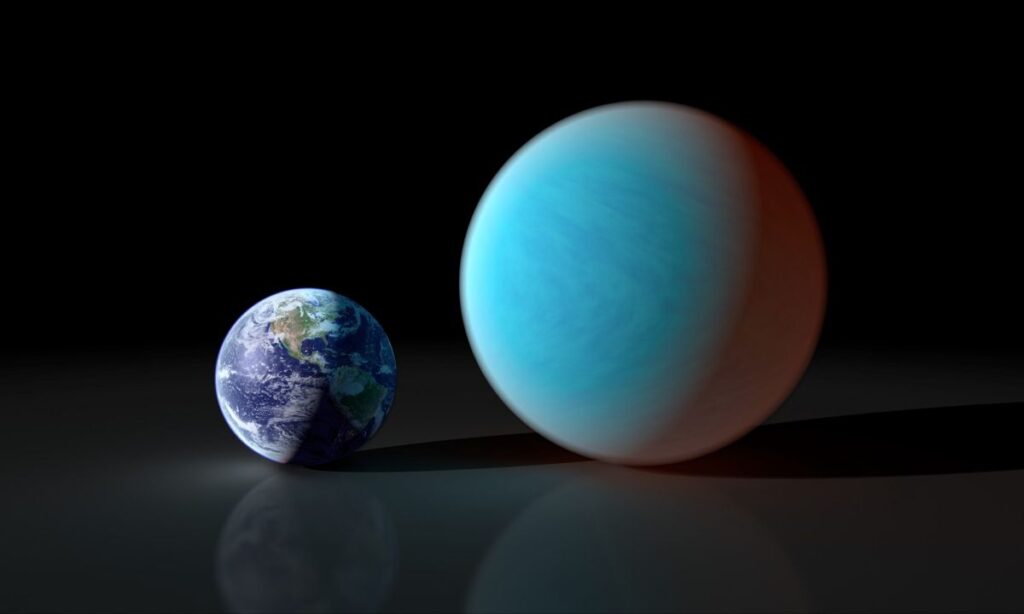
There’s good news! NASA recently announced the discovery of a “Super Earth” they are hoping might have the necessities humans need to survive. Just in case we eventually ruin this one.
Could this recently discovered “super-Earth” have the potential temperature and conditions to sustain life? And not just any life, human life? That’s the question on the minds of the experts now.
The new exoplanet is also relatively close to us. In NASA’s words “fairly close to us” and in civilian lingo, a mere 137 light-years away. They say it also orbits within a “habitable zone.”
According to astronomers, the planet, dubbed TOI-715 b, is about one and a half times the width of Earth. Like Earth, it also orbits a small, reddish dwarf star that’s smaller and cooler than Earth’s sun.
ALSO READ: Arkansas Authorities Capture Two Jail Escapees After Almost 40 Hours
The same system also might harbor a second, Earth-sized planet. If confirmed, it would become the smallest habitable-zone planet discovered by TESS [the Transiting Exoplanet Survey Satellite].
As a result of the super-Earth’s distance from its parent star, it could be in a conservative “habitable zone.” As a result, it might harbor the right temperature for liquid water to form on its surface. NASA says this is essential to sustain life but “several other factors would have to line up, of course.”
The agency also said the measurements of the habitable zone put the newly discovered planet, and possibly the smaller Earth-sized planet, in “prime position” from its parent star.
Due to the short distance, the super-Earth orbits from its parent star, a “year” for the planet is 19 Earth days. The tighter orbits mean the “planets can be more easily detected and more frequently observed.”
Since its launch in 2018, TESS has been contributing to astronomers’ stockpile of habitable-zone exoplanets, such as TOI-715 b. These could be more closely observed by NASA’s James Webb Space Telescope.
POLL—Is Climate Change a Major Threat That Requires Immediate Policy Action?
The Webb telescope’s design not only helps it detect exoplanets but “explore the composition of their atmospheres, which could offer clues to the possible presence of life.”
Georgina Dransfield led the super-Earth research and discovery at the University of Birmingham in the U.K. It was published in the “Monthly Notices of the Royal Astronomical Society” journal in January.
These discoveries mark another milestone in astronomers’ mission to understand what atmospheric conditions can help sustain life and further explore the characteristics of exoplanets beyond our solar system.
The past couple of years have been very exciting for astronomy. There have been more breakthroughs as well as results and feedback from the devices Earth has been sending out to outer space. A good example is the just-discovered planet that might offer a second home for humans if the parameters are right.
ALSO READ: Experts Condemn Texas Secession Threats Amid Border Fight With Biden
As space technology continues to advance, there is no doubt that more planets like the “Super Earth” will come to our notice. Eventually, we might even be able to traverse those light-years and see these things for ourselves.
You Might Also Like:
Experts Kick Against Biden’s Gaza Strategy, Say It’s an Illogical Disaster
House GOP Subpoenas DA Who Charged Trump in Georgia
Experts Condemn Texas Secession Threats Amid Border Fight With Biden
Counselor Alleges Parents of Michigan School Shooter Chose Work Over Taking Care of Teen
Federal Appeals Court Strikes Down Florida Law Restricting Chinese Land Ownership
